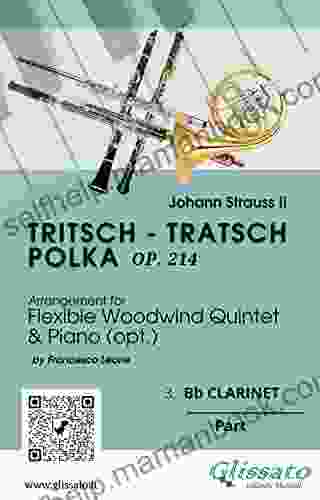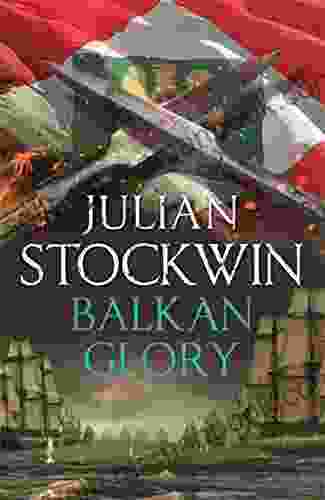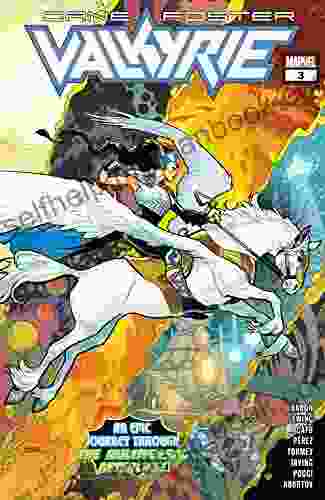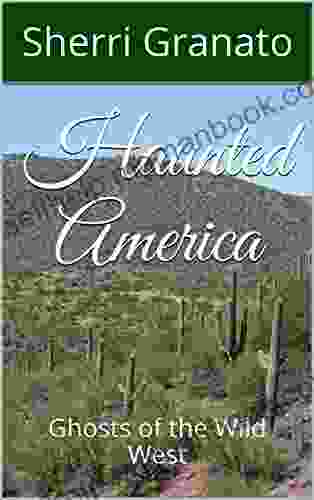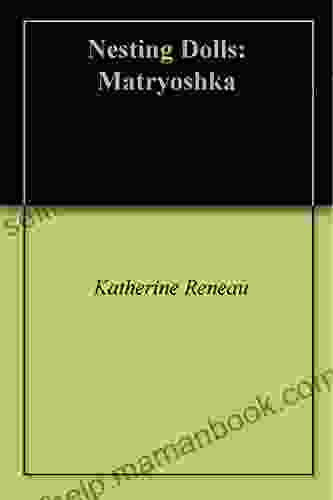Unveiling the Enchanting Op. 214 Tritsch-Tratsch Polka by Johann Strauss II: A Musical Delight for Wind Quintet and Optional Piano

Step into the enchanting world of Johann Strauss II's beloved Op. 214 Tritsch-Tratsch Polka, a timeless masterpiece that has captivated audiences for over a century. Originally composed in 1858, this polka remains a cornerstone of the Viennese waltz tradition, its infectious melodies and lively rhythms synonymous with the golden age of ballroom dancing.
5 out of 5
| Language | : | English |
| File size | : | 2214 KB |
| Screen Reader | : | Supported |
| Print length | : | 81 pages |
A Polka with a Twist: Flexible Instrumentation for Diverse Ensembles
Strauss's Tritsch-Tratsch Polka is renowned for its flexibility, allowing it to be performed by various chamber ensembles. The standard instrumentation includes flute, oboe, clarinet, horn, and bassoon. However, the composer also provided an optional piano part, enabling the polka to be performed with or without keyboard accompaniment.
This flexibility makes the Tritsch-Tratsch Polka a highly accessible work for wind quintets of all levels. Whether you're an experienced ensemble or a group of aspiring musicians, you'll find this polka a rewarding and enjoyable piece to perform.
Exploring the Enchanting Musical Landscape of the Tritsch-Tratsch Polka
From the opening notes, the Tritsch-Tratsch Polka exudes an irresistible charm. The piece is characterized by its lively tempo, infectious melodies, and vibrant harmonies. Strauss's masterful use of instrumentation creates a rich and colorful soundscape that transports listeners to the heart of a Viennese ballroom.
The polka's main theme is a captivating melody that weaves its way through the entire piece. The flute and oboe take turns presenting the melody, their interplay creating a delightful dialogue. The clarinet and bassoon provide rhythmic support, while the horn adds a warm and expressive countermelody.
The polka features several contrasting sections that add depth and interest to the musical journey. The middle section, known as the trio, offers a more lyrical and reflective moment. The main theme is restated in a slower tempo, with the clarinet and bassoon playing a more prominent role.
The Optional Piano Accompaniment: Enhancing the Musical Experience
While the Tritsch-Tratsch Polka is a complete and satisfying work without piano accompaniment, the optional piano part adds an extra layer of richness and brilliance to the performance.
The piano part provides a solid harmonic foundation, supporting the wind instruments and enhancing the overall fullness of the sound. It also adds rhythmic drive and momentum, propelling the polka forward with an irresistible energy.
For pianists, the Tritsch-Tratsch Polka offers an opportunity to showcase their virtuosic skills. The part requires a combination of delicate fingerwork and rhythmic precision, adding an extra layer of excitement to the performance.
Incorporating the Tritsch-Tratsch Polka into Your Wind Quintet Repertoire
If you're looking for a lively and engaging piece to add to your wind quintet repertoire, the Op. 214 Tritsch-Tratsch Polka by Johann Strauss II is an excellent choice. Its flexibility, infectious melodies, and vibrant harmonies make it a crowd-pleaser that will leave a lasting impression on your audience.
Whether you choose to perform it with or without piano accompaniment, the Tritsch-Tratsch Polka is sure to bring joy and delight to musicians and listeners alike. So, gather your woodwind quintet, embrace the spirit of Viennese waltz, and embark on a musical journey that will transport you to a world of pure enchantment.
5 out of 5
| Language | : | English |
| File size | : | 2214 KB |
| Screen Reader | : | Supported |
| Print length | : | 81 pages |
Do you want to contribute by writing guest posts on this blog?
Please contact us and send us a resume of previous articles that you have written.
 Top Book
Top Book Novel
Novel Fiction
Fiction Nonfiction
Nonfiction Literature
Literature Paperback
Paperback Hardcover
Hardcover E-book
E-book Audiobook
Audiobook Bestseller
Bestseller Classic
Classic Mystery
Mystery Thriller
Thriller Romance
Romance Fantasy
Fantasy Science Fiction
Science Fiction Biography
Biography Memoir
Memoir Autobiography
Autobiography Poetry
Poetry Drama
Drama Historical Fiction
Historical Fiction Self-help
Self-help Young Adult
Young Adult Childrens Books
Childrens Books Graphic Novel
Graphic Novel Anthology
Anthology Series
Series Encyclopedia
Encyclopedia Reference
Reference Guidebook
Guidebook Textbook
Textbook Workbook
Workbook Journal
Journal Diary
Diary Manuscript
Manuscript Folio
Folio Pulp Fiction
Pulp Fiction Short Stories
Short Stories Fairy Tales
Fairy Tales Fables
Fables Mythology
Mythology Philosophy
Philosophy Religion
Religion Spirituality
Spirituality Essays
Essays Critique
Critique Commentary
Commentary Glossary
Glossary Bibliography
Bibliography Index
Index Table of Contents
Table of Contents Preface
Preface Introduction
Introduction Foreword
Foreword Afterword
Afterword Appendices
Appendices Annotations
Annotations Footnotes
Footnotes Epilogue
Epilogue Prologue
Prologue Chantal Bilodeau
Chantal Bilodeau Michael Stewart
Michael Stewart Mark Yakich
Mark Yakich Pennie Mae Cartawick
Pennie Mae Cartawick J M Coetzee
J M Coetzee Brandon Hearn
Brandon Hearn Mary Grace Fahrun
Mary Grace Fahrun Michael Symon
Michael Symon Paul Kalanithi
Paul Kalanithi Huan Liu
Huan Liu Russell J Quaglia
Russell J Quaglia Helen Ducal
Helen Ducal Amber Foster
Amber Foster Jon Law
Jon Law Robbie Montgomery
Robbie Montgomery Kelvin F Jackson
Kelvin F Jackson Anne Schlosser
Anne Schlosser Jim Van Houten
Jim Van Houten Susanne Hope
Susanne Hope H James Garrett
H James Garrett
Light bulbAdvertise smarter! Our strategic ad space ensures maximum exposure. Reserve your spot today!
 Victor TurnerFollow ·18.2k
Victor TurnerFollow ·18.2k Colin FosterFollow ·12.4k
Colin FosterFollow ·12.4k Brennan BlairFollow ·4.3k
Brennan BlairFollow ·4.3k Percy Bysshe ShelleyFollow ·18.4k
Percy Bysshe ShelleyFollow ·18.4k Felipe BlairFollow ·19.3k
Felipe BlairFollow ·19.3k Cole PowellFollow ·5.8k
Cole PowellFollow ·5.8k Dave SimmonsFollow ·14.2k
Dave SimmonsFollow ·14.2k Jeffery BellFollow ·5.2k
Jeffery BellFollow ·5.2k
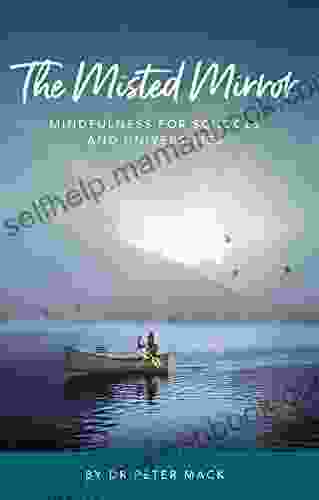
 Boris Pasternak
Boris PasternakThe Misted Mirror: Mindfulness for Schools and...
What is The Misted...
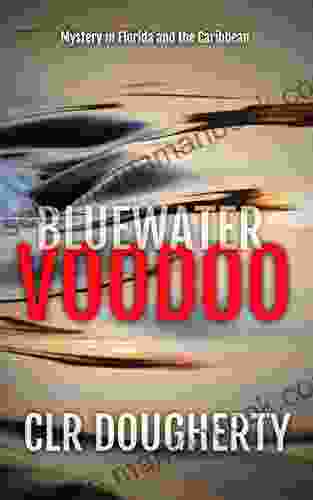
 Holden Bell
Holden BellEmbark on Thrilling Adventures in the Uncharted Depths of...
Unveiling the Enchanting...
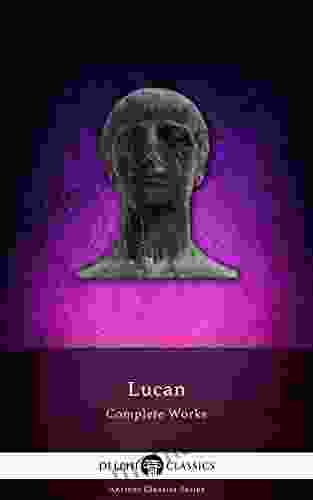
 Seth Hayes
Seth HayesDelphi Complete Works of Lucan: Illustrated Delphi...
This meticulously edited...

 Jackson Hayes
Jackson HayesThe Enigmatic Cat Burglar: Unraveling the Intriguing...
In the annals of crime, the name Bernie...
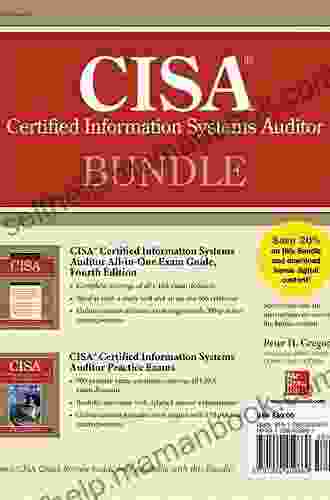
 Quentin Powell
Quentin PowellAligned With The Cisa Review Manual 2024 To Help You...
The CISA Review Manual 2024 is the most...

 Austin Ford
Austin FordUnlocking Revenue Potential: A Comprehensive Business...
In today's digital...
5 out of 5
| Language | : | English |
| File size | : | 2214 KB |
| Screen Reader | : | Supported |
| Print length | : | 81 pages |


